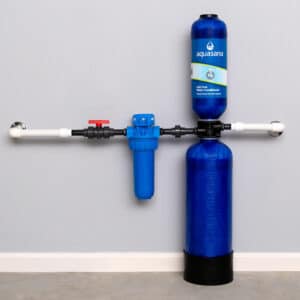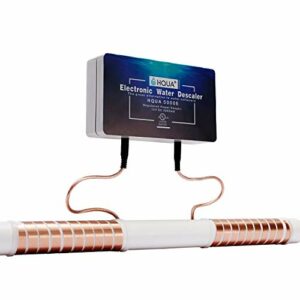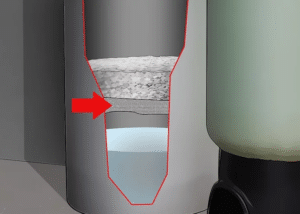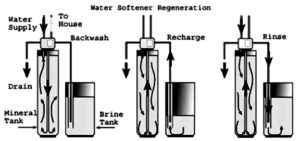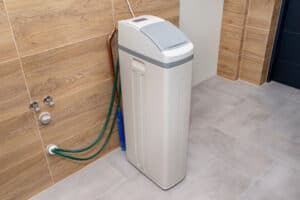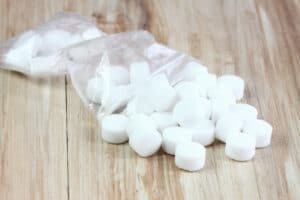Every once in a while, the time may come to clean your water softener system. Whether you’ve been away for a while on vacation and found the water foul-smelling or concerned about microorganisms growing in your water supply, prudent homeowners should keep an eye on the health of their water softener.
In such cases, it may be natural to ask if you can put bleach in your water softener, given that bleach is a powerful, all-purpose product that is well-known to sanitize and decontaminate water sources. However, the answer to the question depends on a few critical factors.
Can I put bleach in my water softener? The simple answer is: While bleach is an affordable and efficient way to sanitizing foul-tasting or smelling water, it is not always the best solution.
You should consult your user’s manual first. Every water system has different internal resins, some of which will withstand bleach, while others will not resist bleach’s harsh chemical interference.
In this article, we’ll investigate when and where the best times are for running bleach through a water softener, how to disinfect water softeners, and answer some fundamental questions about the use of bleach in water softeners.
Don’t forget to read our water softener recommendations for city water if you’re on the market for a new water softener system.
Can I Put Bleach In My Water Softener?
It depends on your water softener’s instruction manual. While bleach is a simple solution for reducing repugnant smells and tastes in some water softeners, other water softeners will not tolerate the potent chemical additive that bleach is.
If your water softener includes instructions not to use bleach, manufacturers recommend many specialized chemical additives that will work better than bleach.
One solution that water softener owners have found to sanitize their systems that do not utilize bleach is simple salt. Filling up your water softener cartridge with salt and permitting it to run a few cycles will suffice for cleaning your water softener correctly.
The element of your water softener that will determine if you can use bleach or not is the resin. Resin is the purifying substance that helps remove the so-called “hard” chemicals from your water. The resin is saturated with sodium ions in a procedure that allows it to eliminate calcium and magnesium — “hard” chemicals” — from your pipes.
The only difference from one resin system to another is the type of grain or filtration system it uses to soften water. There are two kinds of resin grain, fine mesh, and hi-cap. It all boils down to whether you can use bleach to clean your softener, and you’ll have to check your instruction manual first before preceding.
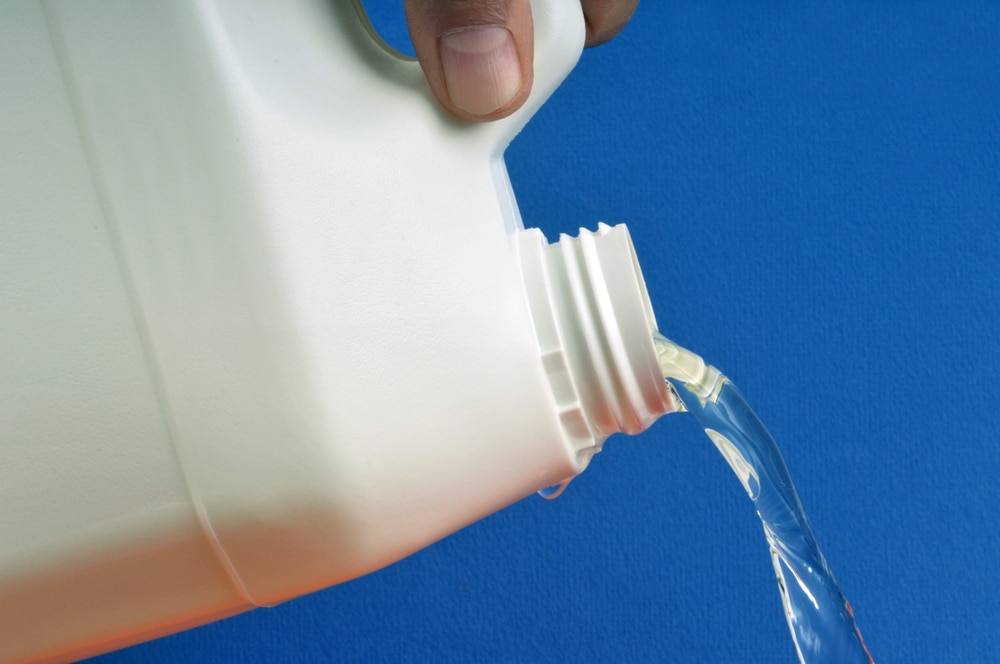
How To Sanitize Water Softener
If your water softener system recommends using bleach to clean and sanitize your unit, good luck! Most experts consider bleach an optimal solution to eliminate bacteria and mildew from water sources.
There are varying opinions on the optimal dosage levels for sanitizing water softeners, but the following list some of the most consistently effective options.
If You Have A Smaller Water Softener
This dosage will work for softeners with sizes near the Sears Kenmore 100 to 150 series. We recommend 1 to 2 tablespoons of bleach (¾ oz) of regular, unscented bleach per cycle for these lower-volume units.
Regular-Sized Family Home Water Softeners
The traditional amount of bleach we recommend for typical homes is one tablespoon (1.5 oz) per cubic foot of resin in your unit. Since most family units are about three cubic feet, users should add 2 oz of bleach per cycle.
If You Have A Larger or Industrial Water Softener
Most of the large water softener units have resin tanks around four cubic feet. Calculating with our bleach ratio, that means users should incorporate about a ½ cup (5 oz) of bleach per cycle.
Steps for Sanitizing a Water Softener With Bleach
Next, we’ll outline some of the basic steps for adding bleach if you can put bleach in your water softener.
Remember: these steps will only apply if your resin tank can tolerate a bleach cycle. If the instruction manual indicates that bleach will compromise the softener, check with your manufacturer for the best products to sanitize your softener system.
- Turn off any other water treatment systems you have before this procedure.
- Start a regular or “extra” regeneration cycle.
- Add approximately 3 gallons of water into the salt tank if it is empty. If you’re sanitizing a system currently in use, skip this step.
- Add the bleach to the brine tank according to the dosages outlined above.
- NOTE: Don’t pour the bleach directly on the salts. It could result in an uneven bleach distribution.
- After adding the bleach, pour in an additional 2 cups of water to rinse off the unit’s plastic parts.
- Run the softener through the full regular cycle.
- For best practices, run an additional regular water cycle to flush the bleach from the tank.
- Finally, check your salt supply. You’ll likely need to add more salt or potassium chloride KCl to the brine tank after the bleach cycle.
Please refer to our article on water softener maintenance for tips on how to properly care for your water softener.+
Alternatives to Bleach For Water Softener
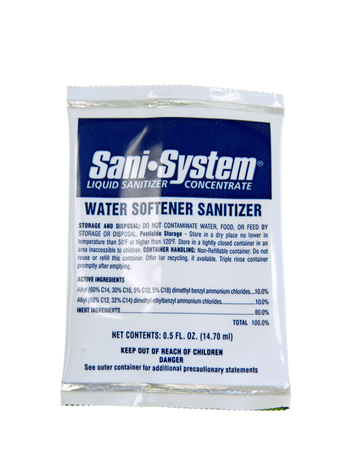
If your water softener manufacturer recommends a non-bleach solution to sanitize your brine tank, many alternatives work just as well, albeit at a higher price on average.
Culligan offers an 0.5oz in-house sanitation pack called the “Sani-System” pack. It is an all-in-one solution chemical mixture that users can add to their softeners periodically, just as a bleach flush would work.
Many manufacturers also offer “green sand” sanitizing packs (potassium permanganate) and other oxidizing agents like iodine which works just as well as bleach, though gentler.
Many users have found hydrogen peroxide a useful sanitizer for water softener owners whose water supply and pipes have absolutely zero iron contamination. NOTE: We recommend you check with your local plumber and water supply resource to confirm the condition of your piping before the use of hydrogen peroxide sanitizers.
Conclusion
The best way to keep your water softener working efficiently (see how to know if its working) is to sanitize it periodically. Without cleaning, water hardness will accrue and reduce your water quality dramatically.
If you’re interested in using bleach to sanitize your water softener, always check your manufacturer’s instructions before moving forward. For those who can use it, bleach is an affordable and easy-to-use solution to eliminate water hardness in a pinch.
Whether you’re using bleach to reduce bacterial contamination, mildew, or disagreeable smells, homeowners should keep in mind the nearly universal efficiency of bleach in their water softeners.

